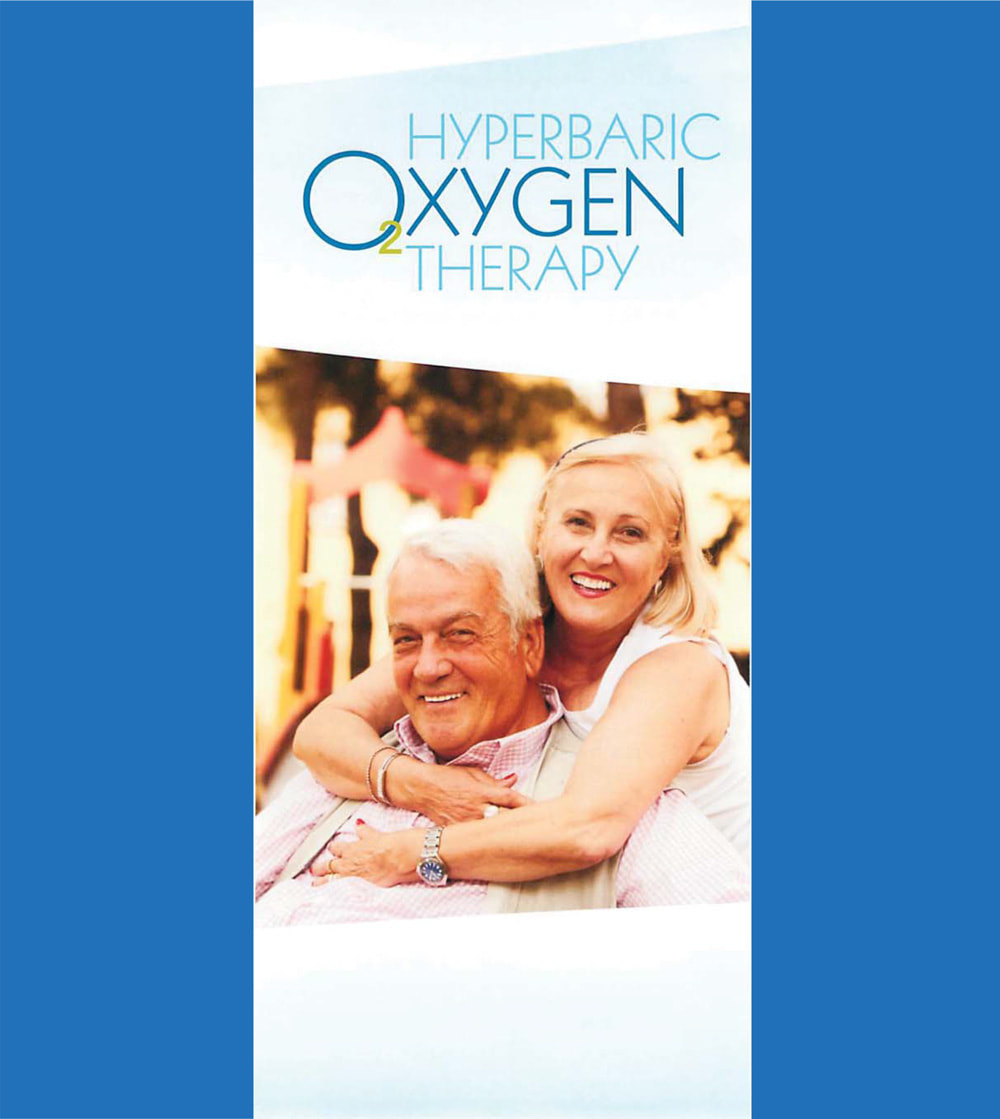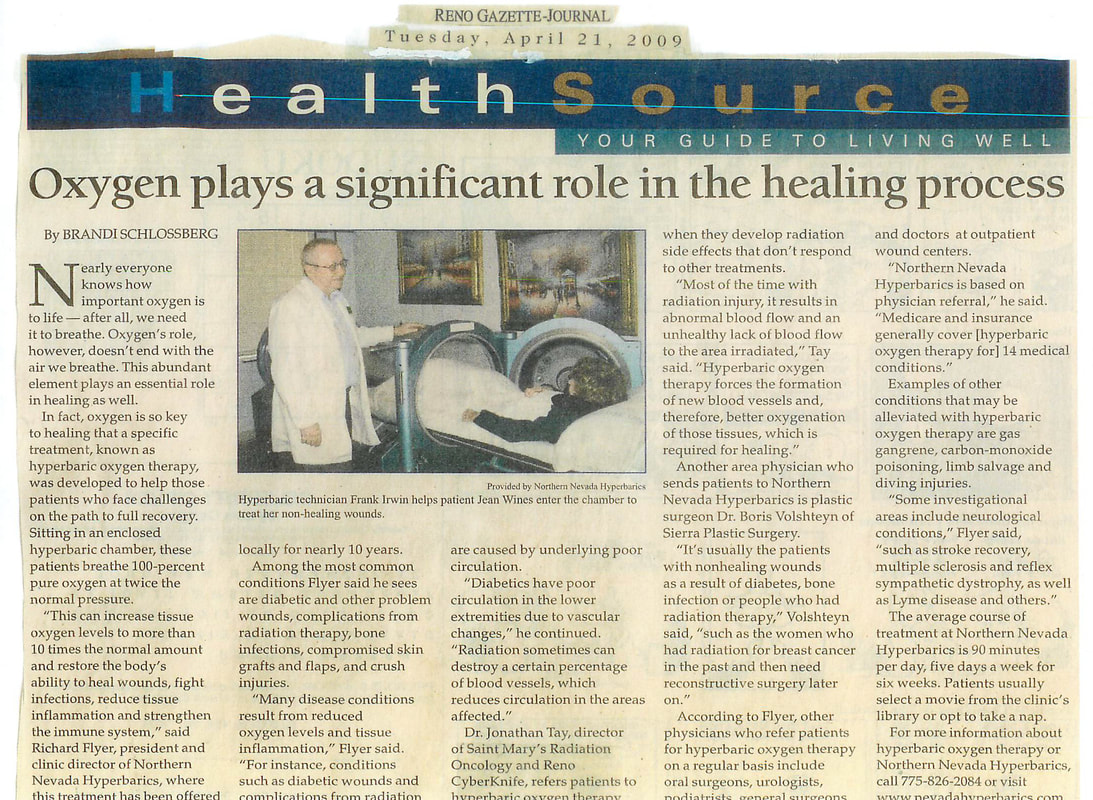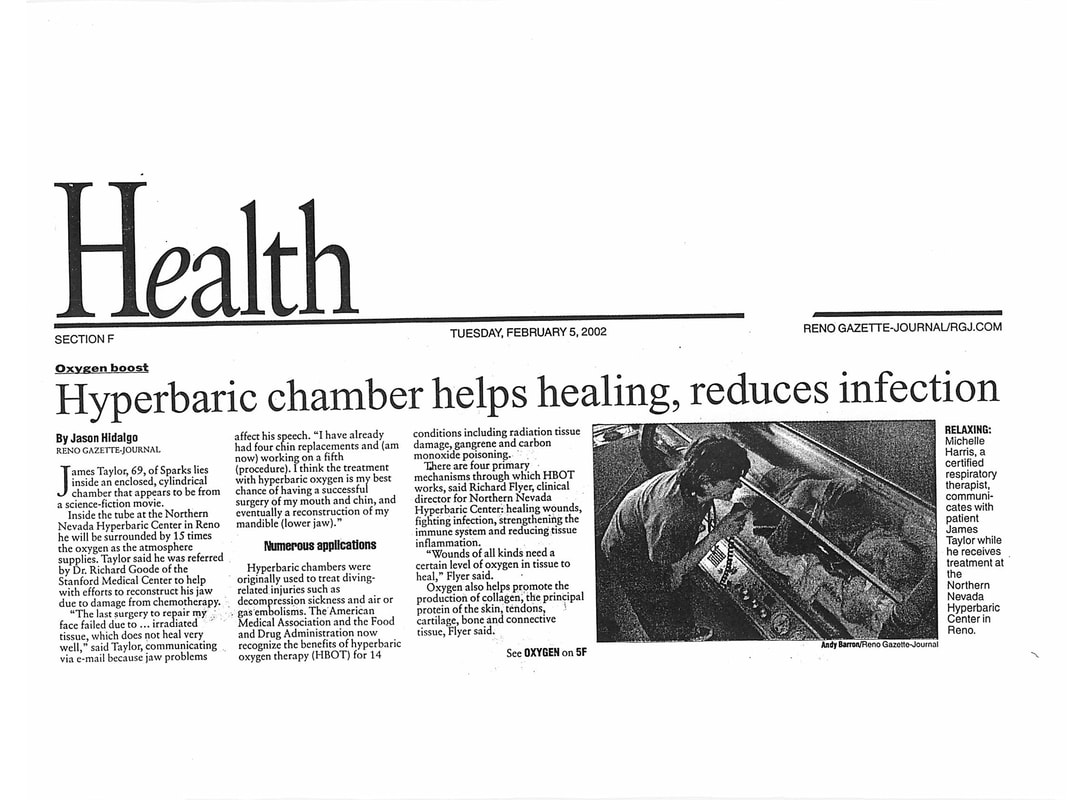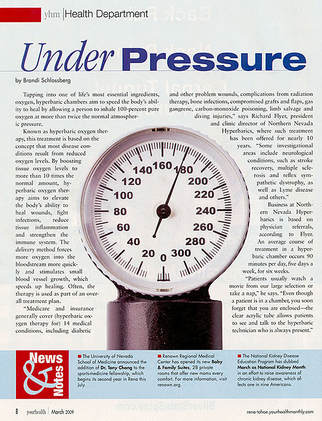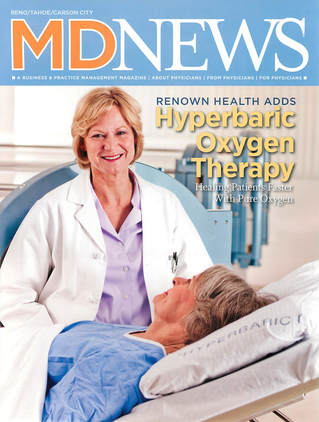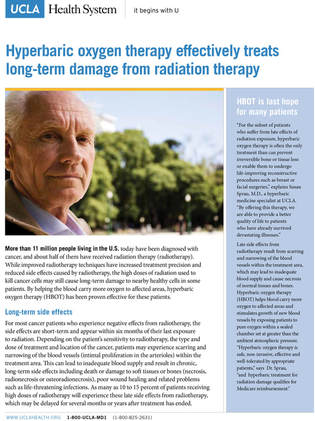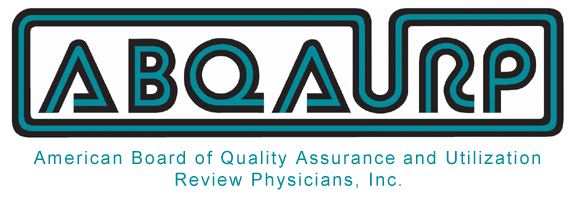What is Hyperbaric Oxygen Therapy?
Frequently Asked Questions About Hyperbaric Oxygen Therapy
What is HBOT?
Hyperbaric Oxygen Therapy is an AMA and FDA approved medical treatment where a patient inhales 100% oxygen under pressure to speed the body’s natural ability to heal. It has been used for more than three decades as an adjunct medical treatment for a variety of medical conditions.
When a patient breathes 100% pure oxygen at pressures greater than normal, arterial oxygen pressure increases up to 15 times. Such doses have a number of benefits. Hyper-oxygenation of the blood results in improved wound healing, manages infections, and eliminates low tissue oxygen commonly found in diseased areas of the body.
When a patient breathes 100% pure oxygen at pressures greater than normal, arterial oxygen pressure increases up to 15 times. Such doses have a number of benefits. Hyper-oxygenation of the blood results in improved wound healing, manages infections, and eliminates low tissue oxygen commonly found in diseased areas of the body.
How Does HBOT Work?
- Promotes Wound Healing
HBOT enhances the formation of new blood capillaries (by making more collagen)—by carrying more oxygen to areas that may not be getting enough oxygen. HBOT also reduces swelling of inflamed tissue and will fight wound infections. - Fights Infection
Higher oxygen levels enhance white blood cells to kill harmful bacteria and viruses. HBOT will kill many harmful anaerobic microbes directly. HBOT will enhance the effect of certain antibiotics. Overall, there is an immune system strengthening effect. - Enhances Circulation
Thus, HBOT can speed healing, promote tissue detoxification, and increase available energy.
Are There Any Side Effects?
The risks associated with HBOT are minimal, however, patients may experience a few side effects. The most common complications include sinus squeeze and temporary changes in vision.
How Do I Prepare for Treatment?
After referral by your doctor and evaluation by a hyperbaric medicine specialist you will be given detailed instructions. You will be asked not to wear the following materials while in the chamber: hair oils, hair spray, perfumes, make-up, nylons (panty hose), ointments, liniments, petroleum or Vaseline products, wigs or hair pieces, aftershave, synthetics (i.e. rayon, nylon, etc.), or salves. Watches should not be worn in the chamber because they may break under the increased pressure. Because the therapy involves 100 percent oxygen, any form of smoking material, lighters or matches are STRICTLY prohibited in the chamber. Anything not specifically allowed in the chamber must not be taken in under any circumstances.
What Will I Experience During Treatment?
The first stage of treatment is compression, in which the pressure inside the chamber is gradually increased. The temperature will rise and later be adjusted to a comfortable level. The patient will feel a fullness in the ears, but instruction is provided to help clear the pressure and relieve temporary discomfort. Inside the chamber, the patient can sleep, watch TV or a video tape, listen to music or just relax. When the treatment is completed, normal pressure is restored slowly.
How Often Will I Have Treatments?
A variety of factors determine treatment protocol. Acute conditions may require a treatment period of ten days or less, while chronic conditions may require therapy over a few months. Although treatment schedules will vary, most treatments will be administered during two hour sessions, once or twice a day, from Monday through Friday.
What Common Uses Will My Insurance Pay For?
- Air/Gas Embolisms (Bends)
- Carbon Monoxide Poisoning and Smoke Inhalation
- Decompression Sickness
- Adjunctive Hyperbaric Oxygen in Intracranial Abscess
- Gas Gangrene
- Crush Injuries
- Necrotizing Soft Tissue Infection
- Enhanced Healing of Selected Wounds
- Exceptional Blood Loss Resulting in Anemia
- Osteomyelitis
- Radiation Tissue Damage
- Skin Grafts and Flaps
- Thermal Burns
What Are some of the New Uses Of HBOT?
- Stroke
- Traumatic Brain Injury
- Cerebral Palsy
- Multiple Sclerosis
- Lyme Disease
- Migraine and Cluster Headaches
- Cosmetic Surgery Healing
What Is The History of HBOT?
- Hyperbaric chambers have been in use for centuries, as early as 1662. However, hyperbaric oxygen therapy has been used clinically since the mid 1800’s.
- HBOT was tested and developed by the U.S. Military after World War I. It has been used safely since the 1930’s to help treat deep sea divers with decompression sickness.
- Clinical trials in the 1950’s uncovered a number of beneficial mechanisms from exposure to Hyperbaric oxygen. These experiments were the forerunners of contemporary applications of HBOT in the clinical setting.
- In 1967, the Undersea and Hyperbaric Medical Society (UHMS) was founded to foster the exchange of data on the physiology and medicine of commercial and military diving. The Hyperbaric Oxygen Committee was developed by the UHMS in 1976 to oversee the ethical practice of hyperbaric medicine.
- Today, there are thirteen reimbursable indications approved by the UHMS as primary or adjunctive treatment modalities. HBOT has proved to be life and limb saving, as well as cost effective and therapeutic in a variety of clinical conditions.
What Is the Undersea and Hyperbaric Medical Society (UHMS)?
The Undersea and Hyperbaric Medical Society (UHMS) is an international scientific organization founded in 1967 to foster exchange of data on the physiology and medicine of commercial and military diving. The results of ongoing research and clinical aspects of undersea and hyperbaric medicine are reported annually at scientific meetings.
Thank You! You guys are the best. You made me feel comfortable, loved, and at home. I hope you all have many wonderful life experiences. Take Care.
– Josie from Gardenerville (Lyme Disease)
– Josie from Gardenerville (Lyme Disease)

